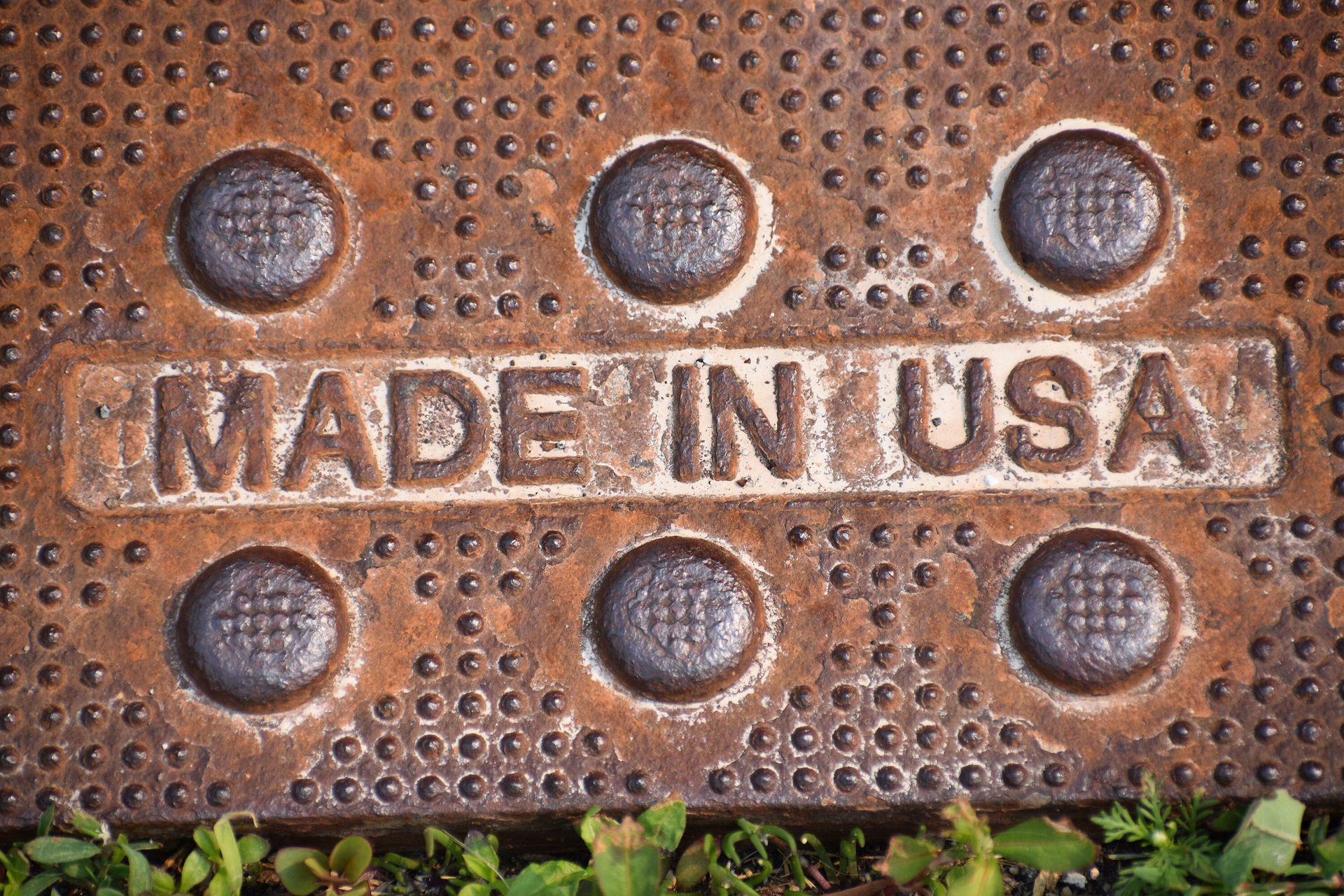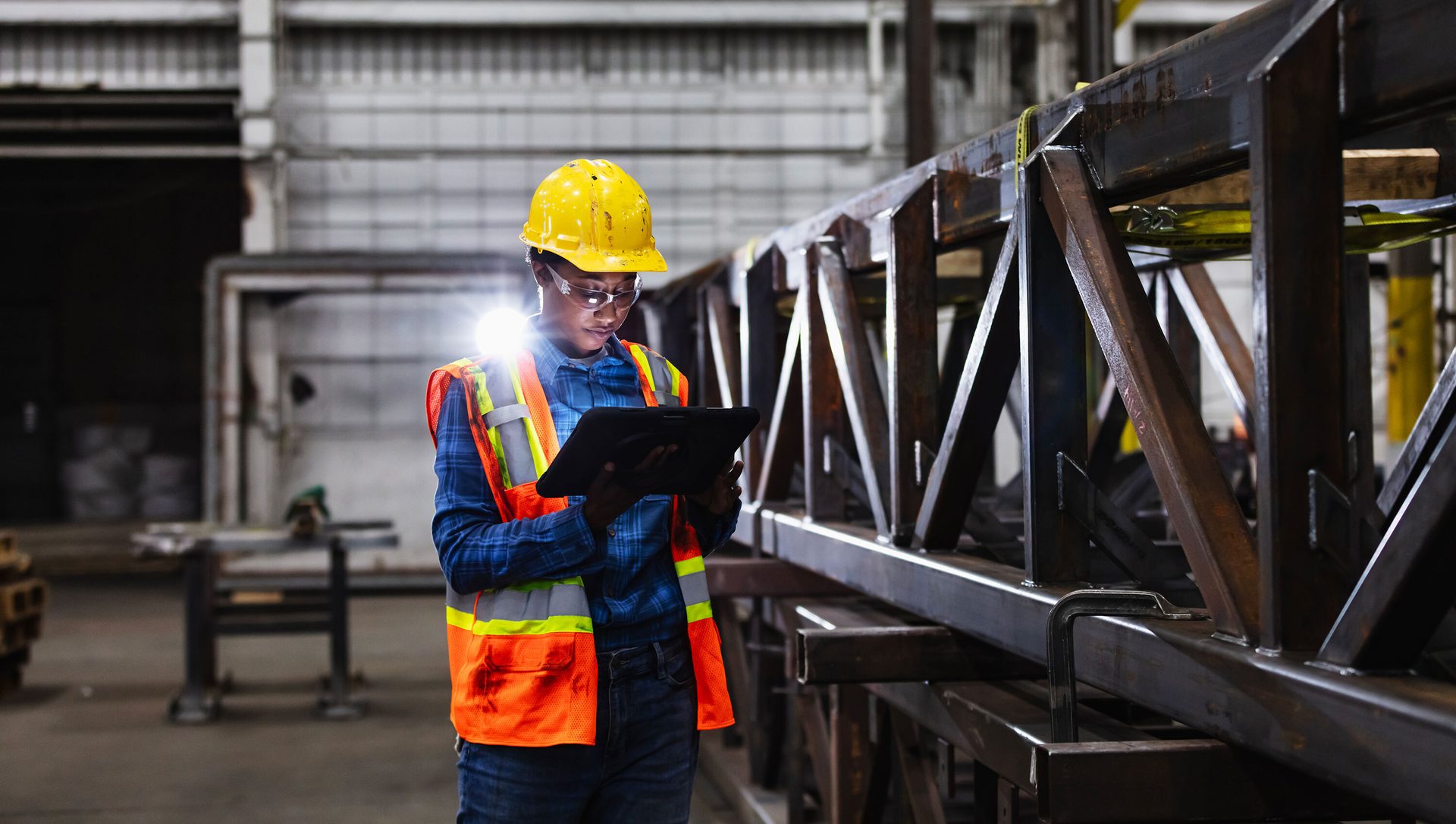feature
From global to local: onshoring and reshoring
Plumbing professionals in every part of the industry are rethinking and reimagining production to bring it closer to home.
By Kristen Bayles

The conversation surrounding “Made in America" products is about more than just patriotism. Julian Prizont-Cado / iStock / Getty Images Plus
In early 2020, the plumbing and mechanical industry, like much of the construction sector, was forced to confront a hard truth: the global supply chain wasn’t as stable as many had assumed. As factories overseas shut down and freight delays mounted, lead times for critical components ballooned from weeks to months. Products ranging from copper fittings to commercial water heaters became difficult to source, and entire projects stalled waiting for parts to arrive.
Thankfully, the days of slowdowns due to the pandemic are over. However, though pandemic-related disruptions have long-since eased, new challenges emerged: ongoing geopolitical tensions, trade disputes and fluctuating tariffs exposed the vulnerabilities of relying heavily on offshore manufacturing. Fresh concerns about the resilience of international sourcing strategies are being uncovered constantly.
These conditions set the stage for a shift in mindset across the plumbing and mechanical supply chain; in every sector of the industry, from OEMs and reps to wholesalers and contractors. A growing number of companies have begun reassessing where and how products are made, stored and distributed. What emerged was a renewed interest in onshoring (moving production to the U.S.) and reshoring (bringing operations back from overseas), as a risk mitigation strategy and an opportunity to reinvest in domestic manufacturing capabilities.
For many in the plumbing sector, the move isn’t just about patriotism or public relations – it’s about control. Shortening the supply chain means better lead times, more predictable pricing and faster response to market demand. As manufacturers look to strengthen relationships with domestic partners, the trend has the potential to reshape how plumbing products are made and delivered for years to come.
What’s driving the trend?
The resurgence of onshoring and reshoring in the U.S. plumbing and mechanical industry is no coincidence. It is the result of multiple intersecting pressures – economic, geopolitical, regulatory and environmental—that have forced manufacturers and distributors to rethink long-held assumptions about global sourcing. While no single factor is driving the shift, four key dynamics stand out.
Supply chain disruptions are at the heart of the issue. It remains a defining catalyst for reshoring efforts. During the COVID-19 pandemic, as international shipping routes buckled under pressure, companies across the construction and mechanical trades struggled to source essential components. Critical plumbing items from valves and PEX tubing to smart fixtures were subject to extended lead times, backorders and soaring freight costs. In some cases, contractors waited months for parts that previously arrived in weeks.

Most companies aren’t reshoring everything—but are balancing global and local sourcing for resilience. kali9 / E+ / Getty Images
Compounding the issue, just-in-time inventory strategies left little room for error. With materials stuck in ports or lost in transit, project timelines slipped and customer satisfaction suffered. For many manufacturers and wholesalers, the experience underscored the value of shorter, more controllable supply chains—and prompted a shift toward just-in-case models and more regionalized production. This issue opened the eyes of many in the industry to the problem with outsourcing.
Few sectors felt the impact of pandemic-era supply chain disruptions more acutely than plumbing and mechanical. In 2020 and 2021, manufacturers of water heaters, fixtures, fittings and pipe struggled to maintain production schedules amid factory shutdowns overseas, materials shortages and a clogged global shipping network. Even essential items such as pressure-balancing valves and sensor-operated faucets became difficult to source.
For reps and distributors, the resulting product delays often strained contractor relationships and forced the use of alternate products or brands. Lead times that once measured in days stretched into months, making forecasting and project scheduling a logistical nightmare.
These challenges highlighted the fragility of just-in-time inventory models and underscored the value of domestic or nearshore production. As a result, many plumbing manufacturers began diversifying their supplier base and investing in regional warehousing, if not full reshoring of critical product lines.
Rising labor costs overseas are also a contributing factor. The long-standing cost advantage of overseas manufacturing, particularly in Asia, is narrowing. China, once the go-to destination for low-cost production, has seen its average manufacturing wages rise significantly; more than tripling over the past decade. While some companies have moved operations to lower-cost countries like Vietnam or India, these regions often face infrastructure, quality control and productivity challenges.
At the same time, companies are reevaluating the true cost of offshore manufacturing. Longer transit times, higher minimum order quantities, intellectual property risks and quality assurance costs all add up, diminishing the overall savings. For plumbing manufacturers producing high-mix, lower-volume goods, domestic production increasingly makes financial and operational sense.
Recent legislation has added momentum to reshoring efforts. The Inflation Reduction Act and the Infrastructure Investment and Jobs Act both include funding provisions tied to “Buy American” requirements, which now demand higher thresholds of U.S.-sourced components in public works and government-funded construction projects.
This is particularly impactful for plumbing and mechanical manufacturers that supply products for institutional and commercial buildings—such as hospitals, schools, and government facilities—where federal procurement standards often apply. Companies that can demonstrate a U.S.-based manufacturing footprint are better positioned to win these contracts and meet evolving compliance mandates.
For rep agencies and wholesalers, domestic sourcing also translates to greater transparency and shorter response times, benefits that are becoming more critical as customers prioritize service and reliability over rock-bottom pricing.
Consumer preference for American-made goods is also growing. According to a 2023 Consumer Reports survey, nearly 80% of Americans prefer to purchase products manufactured in the United States, even if it means paying more.
Beyond cost and logistics, sustainability has also emerged as a major influence on supply chain strategy. The plumbing industry has long been at the forefront of water conservation and efficiency, but now, many manufacturers are expanding that commitment to include carbon reduction and lifecycle emissions. Long-distance shipping contributes significantly to greenhouse gas emissions, while domestic production offers opportunities for tighter environmental controls and greater transparency in sourcing.
A growing number of companies have begun reassessing where and how products are made, stored and distributed. What emerged was a renewed interest in onshoring (moving production to the U.S.) and reshoring (bringing operations back from overseas), as a risk mitigation strategy and an opportunity to reinvest in domestic manufacturing capabilities.
For plumbing and mechanical manufacturers (many of whom are aligning with LEED, WELL, and ESG standards) reshoring can support broader corporate sustainability goals. It also resonates with specifiers and facility owners seeking greener supply chains and low-impact building systems. Manufacturers that can offer transparent, American-made solutions stand to gain not only contracts, but long-term brand equity.
These pressures are converging to push the plumbing and mechanical industry toward a more resilient and responsive supply chain model. For many in the sector, the next wave of growth may not come from expanding global reach, but from strategically reinvesting at home.
Plumbing’s hybrid approach
The plumbing and mechanical industry has responded to global supply chain volatility with a mix of caution and innovation. While not all companies are fully reshoring production, many are making strategic moves to bring operations closer to home, stabilize supply, and regain control over fulfillment and forecasting. The shift has had meaningful ripple effects across the product pipeline.
Plumbing manufacturers were among the first to feel the sting of overseas production delays. Facing inconsistent availability of brass, stainless steel, electronic components and resins, several high-profile companies doubled down on domestic manufacturing as a hedge against global risk.
GF Building Flow Solutions, for example, produces 100% of its PEX-a pipe products for the Americas in the United States and maintains a robust domestic supplier network. “We believe that being close to our customers and the construction markets we serve makes a lot of sense for producing our products in the U.S.,” the company stated. “This helps us tightly control our quality and delivery times to our customers.”
Bradford White has also long positioned itself as a Made in America brand. With water heater manufacturing facilities in Michigan, the company has not only maintained a U.S. production presence, but expanded it through acquisitions and strategic investment. Similarly, Sloan continues to manufacture the majority of its commercial flushometers, faucets, and valves in North America, giving it greater flexibility in responding to shifting demand.
Gerber Plumbing Fixtures has also ramped up domestic and North American sourcing, particularly for their higher-end product lines where quality control and brand perception are essential. Meanwhile, select component suppliers are reestablishing foundry or assembly operations in the U.S. to meet manufacturer demand for shorter lead times and reliable production schedules.
The outcome is a restructured supply strategy that blends domestic, nearshore and carefully managed offshore operations to reduce risk while maintaining competitiveness.
For independent reps and plumbing distributors, the past few years have completely upended traditional sourcing patterns. Instead of prioritizing cost alone, many are now emphasizing product availability, fulfillment reliability and supplier transparency. Stocking more U.S.-made products or partnering with manufacturers who can guarantee delivery windows has become a competitive advantage.
Distributors are also investing in inventory diversification and regional warehousing to reduce dependence on slow-moving overseas freight. Some, particularly those serving commercial and institutional markets, are making domestic sourcing part of their brand promise, especially when federal or municipal buyers are involved. Shorter supply chains mean manufacturers can adjust production to meet regional demand spikes and reduce the need for buffer stock or substitutions.
Lead times for standard fixtures and fittings have narrowed, particularly for products assembled or finished in the U.S. For example, some manufacturers report lead time reductions of 30–50% for domestically produced SKUs compared to imported equivalents.
Despite these gains, reshoring comes with its own set of challenges. Chief among them is the skilled labor shortage. According to a study by Bloomberg, over 550,000 plumber positions are projected to be unfilled by 2027, with nearly 25% of current tradespeople aged 55 or older.
That said, lead time volatility hasn’t disappeared entirely. Global demand, raw material shortages and port delays still affect certain categories; especially products with high-tech or composite components sourced abroad. Reshoring alone is not a silver bullet, but it’s proving to be a stabilizing force.
Despite these gains, reshoring comes with its own set of challenges. Chief among them is the skilled labor shortage. According to a study by Bloomberg, over 550,000 plumber positions are projected to be unfilled by 2027, with nearly 25% of current tradespeople aged 55 or older. Plumbing product manufacturers attempting to scale domestic operations face difficulty hiring experienced machinists, welders and line workers—particularly in rural or deindustrialized regions.
Additionally, reshoring requires significant upfront capital investment in automation, tooling and plant infrastructure. While federal tax incentives help ease the burden, companies must weigh the long-term ROI of shifting production from overseas to U.S. soil.
Finally, raw material prices remain volatile. Even domestically sourced metals and plastics are subject to global supply and demand pressures. For plumbing manufacturers that rely on specialty alloys or imported components, reshoring the final assembly doesn’t completely insulate them from international cost fluctuations.
Like many in the industry, GF uses a hybrid sourcing model. “We are dual sources on raw materials and purchased components from domestic and international suppliers so we can shift our demand to best deliver cost-effective and timely supply to our customers,” the company noted.
Rather than fully abandoning overseas production, many plumbing and mechanical manufacturers are adopting a similar hybrid approach: reshoring essential lines or high-value SKUs, while maintaining offshore partnerships for commodity items. This dual-path strategy gives manufacturers the flexibility to respond to evolving market conditions while enhancing supply chain resilience. For reps and distributors, the trend creates new opportunities to differentiate on service and reliability—factors that have taken center stage in recent years.
As global markets continue to evolve, the shift toward onshoring and reshoring in the plumbing and mechanical industry is likely to persist—not as a temporary fix, but as part of a long-term strategy to build greater supply chain resilience. While not every product can or should be manufactured domestically, companies are increasingly weighing factors beyond cost alone, including flexibility, reliability, and environmental impact.
Advances in automation, lean manufacturing, and workforce training will play a key role in making domestic production more competitive. Meanwhile, continued investment in infrastructure and construction—particularly in healthcare, education, and multifamily housing—will sustain demand for plumbing products that are readily available and built to last.
Reshoring is not a one-size-fits-all solution, but it is becoming a vital component of a more agile, customer-focused supply chain. For plumbing manufacturers, reps and distributors, the ability to source and deliver quality products quickly and reliably has never been more important.
As companies across the industry adjust their strategies, the outlook is optimistic: a more balanced and resilient supply chain that supports long-term growth, empowers domestic manufacturing, and delivers better service to customers: right here at home!
ABOUT THE AUTHOR:



